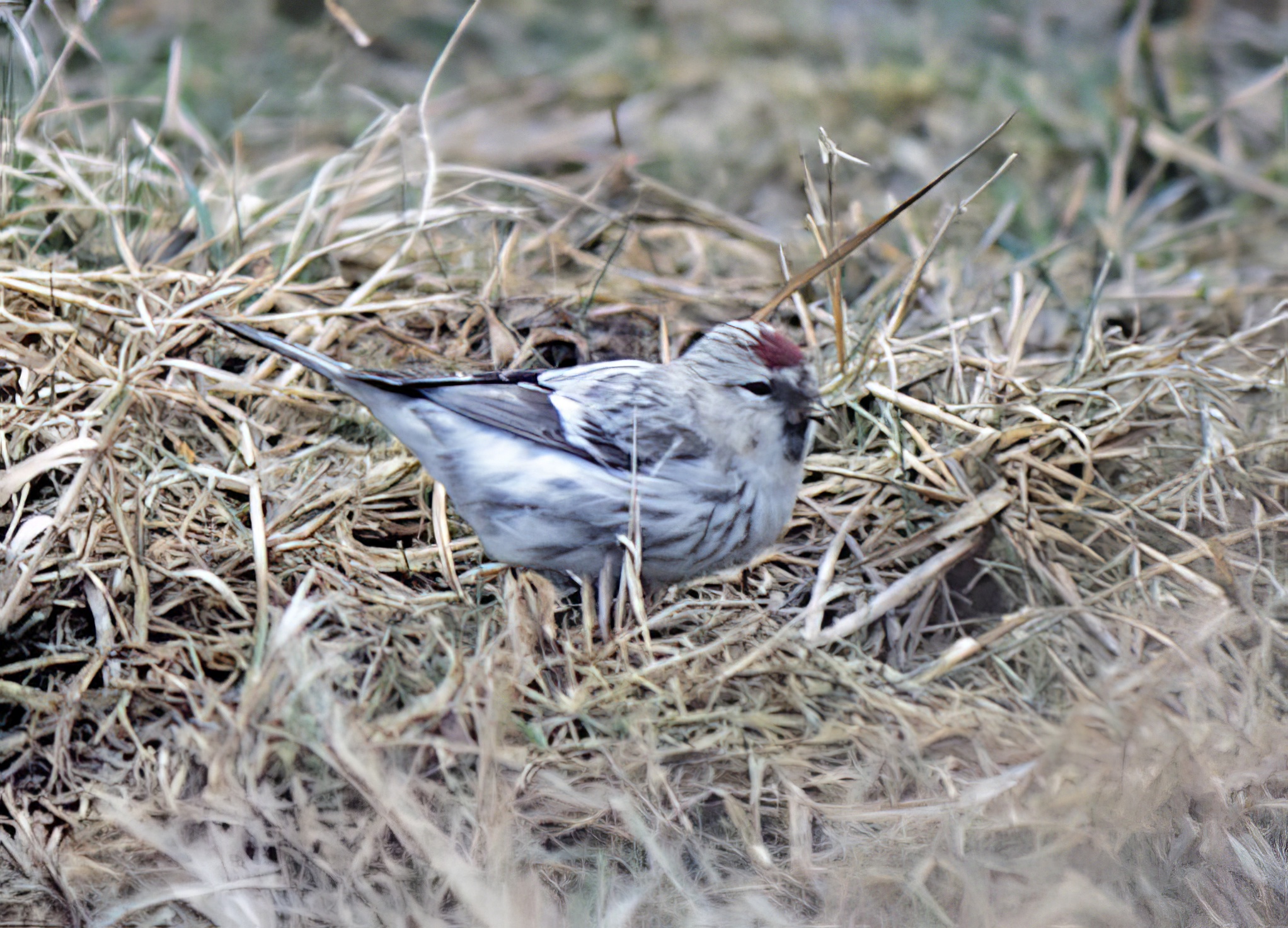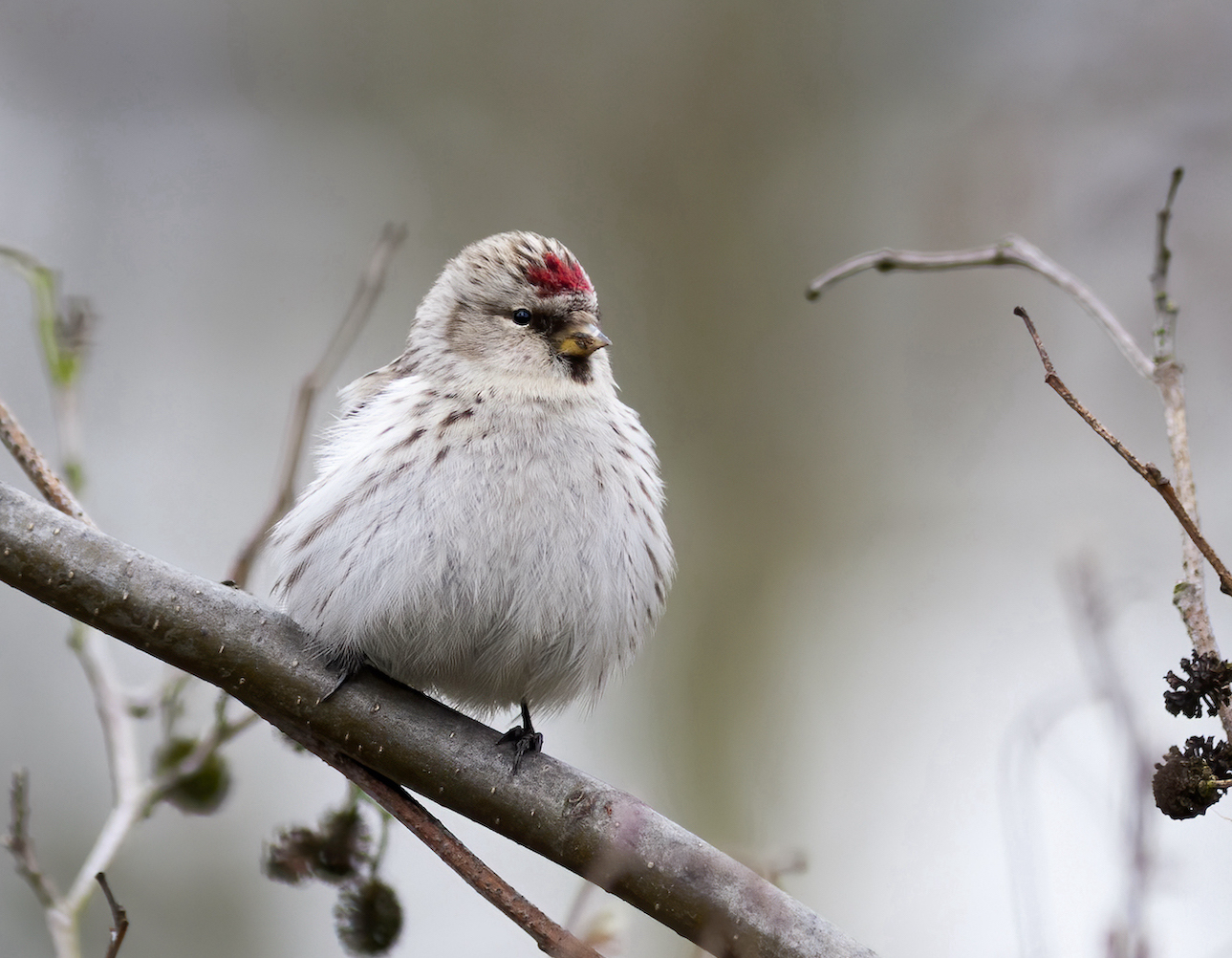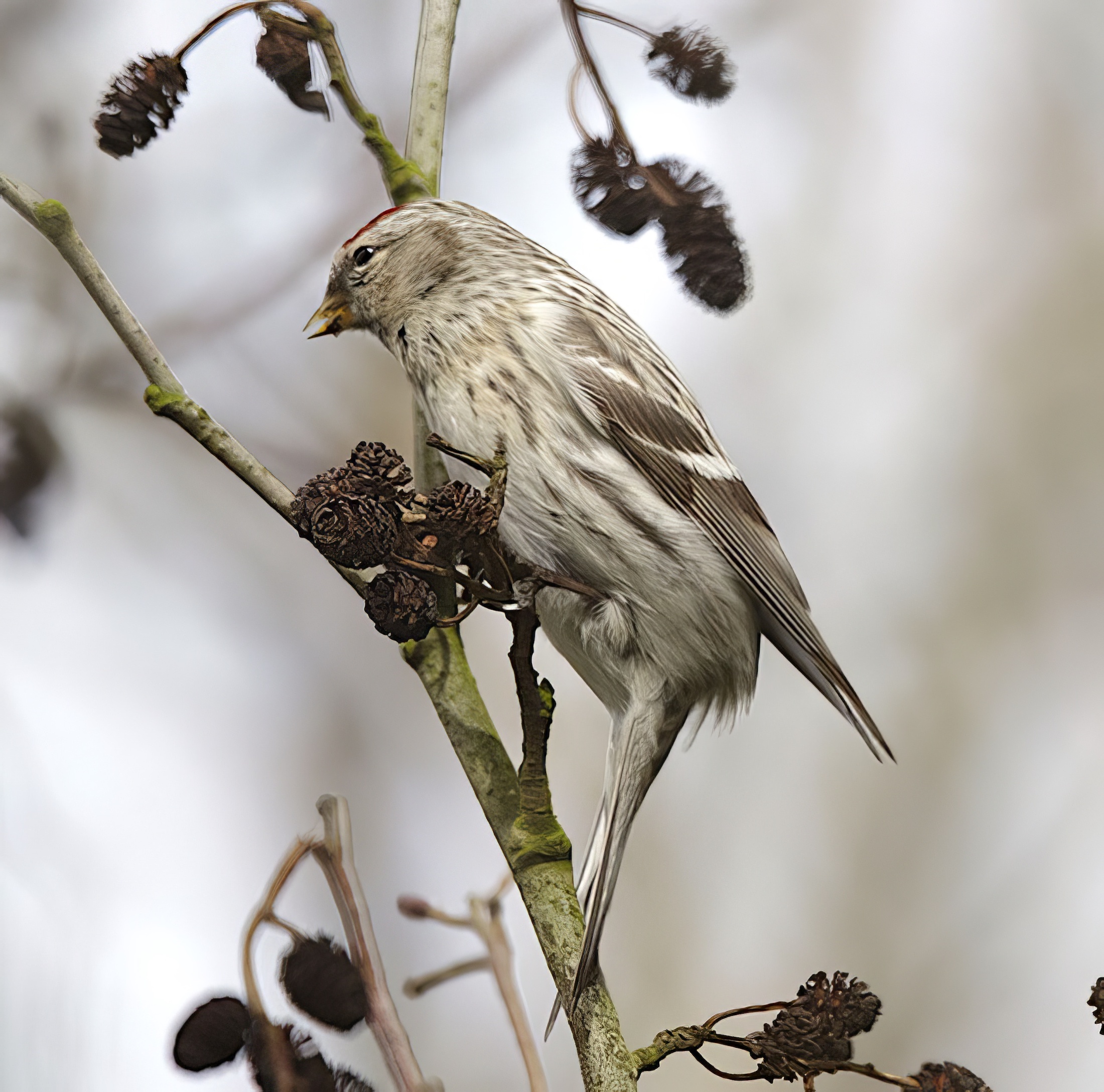Arctic Redpoll Acanthis hornemanni
Vagrant. Scandinavia. First recorded in October 1975. All records of 'Arctic Redpoll' are considered by BBRC as from 1st January 2019.



The redpoll complex, including the two rare redpolls, Hornemann's Arctic Redpoll Acanthis hornemanni hornemanni, and Coues's Arctic Redpoll, A.h. exilipes, continue to cause taxonomic debate. This issue is discussed by Stoddart (2013) in which he summarises what is known about the six redpoll forms by most authors. Two of these are races of Mealy Redpoll, Acanthis flammea - Greenland Redpoll A.f. rostrata and Iceland Redpoll A.f. islandica. The two latter races are especially problematic and the Icelandic population consists of both light and dark forms, many if not most unidentifiable with any certainty - Stoddart (2013) is the essential reference!
The taxonomy of the Redpoll complex continues to evolve, and identification of the different taxa needs attention to detail and preferably good photographs. The northern Redpolls are subject to large irruptive movements, the two most recent ones being in 1990/91 (58 birds), and 1995/6 which saw huge numbers of Common and Coues’s Arctic Redpoll with an estimated total of 431 individuals in Britain from November 1995 to May 1996 (British Birds 93: 59-67). Coues's Arctic Redpoll A.h. exilipes records are summarised below; Hornemann's Arctic Redpoll A.h. hornemanni has never been recorded in Lincolnshire as far as we know. The first record of exilipes was of two birds seen at Saltfleetby-Theddlethorpe Dunes NNR in 1975; in total there have been 26 accepted records involving a minimum of 36 birds up to the end of 2021.
| Site | First date | Last date | Count | Notes |
| Saltfleetby-Theddlethorpe NNR | 12/10/1975 | 2 | ||
| Brumby Common, Scunthorpe | 28/03/1976 | 1 | Male, trapped | |
| Saltfleetby-Theddlethorpe NNR | 21/02/1982 | 13/04/1982 | 1 | |
| Gibraltar Point NNR | 15/01/1984 | 25/02/1984 | 1 | |
| Donna Nook | 18/10/1990 | 21/10/1990 | 1 | |
| Kirkby Moor | 20/01/1991 | 3 | ||
| Kirkby Moor | 20/01/1991 | 27/01/1991 | 1 | Same, one to Jan 27th |
| Linwood Warren | 21/01/1991 | 27/01/1991 | 2 | |
| North Somercotes Warren | 26/01/1991 | 05/02/1991 | 1 | Male, trapped on Jan 26th |
| Laughton Forest | 20/02/1991 | 08/03/1991 | 1 | |
| Donna Nook | 12/11/1995 | 1 | 1CY | |
| Laughton Forest | 27/12/1995 | 7 | ||
| Swanholme Park, Lincoln | 28/12/1995 | 06/01/1996 | 1 | Female or 1CY bird |
| Swanholme Park, Lincoln | 28/12/1995 | 31/12/1995 | 1 | Female or 1CY bird |
| Swanholme Park, Lincoln | 31/12/1995 | 1 | Male | |
| Swanholme Park, Lincoln | 31/12/1995 | 06/01/1996 | 1 | Male |
| Gibraltar Point NNR | 14/01/1996 | 15/01/1996 | 1 | |
| Barton-upon-Humber | 19/02/1996 | 1 | ||
| Laughton Forest | 05/03/1996 | 1 | ||
| Barton Pits | 25/03/2006 | 28/03/2006 | 1 | 2CY bird |
| Goxhill | 12/02/2009 | 22/02/2009 | 1 | On these two dates only. |
| Owlet plantation, Laughton Forest | 21/03/2010 | 27/03/2010 | 1 | |
| Birchwood, Lincoln | 21/01/2011 | 04/03/2011 | 1 | |
| Barton Pits | 26/02/2011 | 27/02/2011 | 1 | |
| Gibraltar Point NNR | 26/02/2011 | 27/02/2011 | 1 | |
| Barton Pits | 01/04/2014 | 06/04/2014 | 1 | 2CY |
Finder’s report: Arctic Redpolls at Saltfleetby-Theddlethorpe NNR on October 12th, 1975, first county record.
by G. P. Catley and D. Robinson
Note: account from the original BBRC submission and submitted in November 1976 at a time when confirming the species/subspecies identity was not straightforward. This record and another in Norfolk brought the 1975 total to 10. Nine of the ten arrived within a six day period from October 9th, 1975.
Circumstances
The two birds were feeding on nettle and thistle seeds near a large hedge and were approached to within 14 ft.
Description
Head was very pale coloured, white, and the back being pale brown was washed with patches of white. Red on crown deeper crimson than on Lesser Redpolls seen earlier. There were two very white wing bars and a pure white rump with no streaks at all. Underparts also pure white from throat down, with only one or two streaks on sides of flanks – none at all on throat and breast. Call notes in flight slightly different from Lesser Redpoll, being slower and more distinct and less jumbled.
References
British Birds Rarities Committee: List changes, 1st January 2019. All records of 'Arctic Redpoll' to be assessed by the British Birds Rarities Committee. https://www.bbrc.org.uk/1907.
Stoddart, A. (2016). Redpolls: a review of their taxonomy, identification and British status. British Birds 106(12): 708-736.

